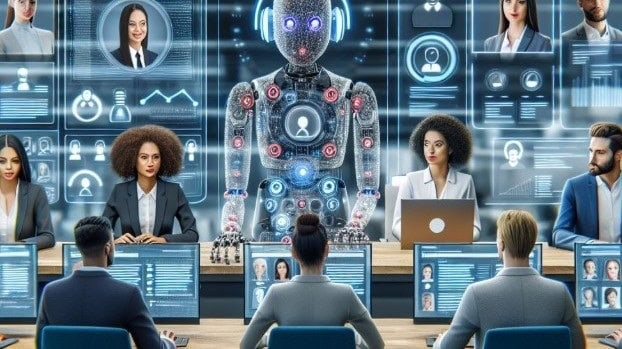
Companies across industries are rapidly adopting AI-powered virtual recruiting tools, reshaping how human-resources departments attract, screen, and hire talent. As global competition for skilled workers intensifies, organizations are turning to automation and intelligent platforms to make recruitment faster, more efficient, and more candidate-friendly.
Over the past year, virtual recruiting systems—equipped with advanced language models, automated interview technology, and predictive analytics—have moved from experimental tools to essential components of modern HR operations. Industry analysts say the shift is reducing administrative burdens on HR teams while improving the overall hiring experience.
A Faster, Smarter Hiring Pipeline
Traditional hiring processes often require HR teams to sift through hundreds of applications, schedule interviews manually, and coordinate communications with candidates. AI-powered systems can now automate those tasks in minutes.
These platforms screen résumés, match applicants to roles based on skill and experience, and even conduct early-stage interviews using conversational virtual assistants. Recruiters receive shortlists of top prospects, complete with summaries of key qualifications and recommended next steps.
“AI gives recruiters the ability to focus on people instead of paperwork,” said one HR technology analyst. “By eliminating bottlenecks and providing deeper insights, companies can make better decisions sooner.”
Enhanced Candidate Experience
In a tight labor market, a smooth hiring experience can make or break a company’s ability to secure top talent. Virtual recruiting platforms offer instant feedback, flexible automated scheduling, and on-demand interview options—improving transparency and engagement for applicants.
Candidates can now complete screening interviews at their convenience, and AI tools assess responses for communication skills, job-specific competencies, and cultural alignment. This technology helps ensure that no candidate falls through the cracks due to delays or logistical issues.
Data-Driven Decision-Making
A major advantage of AI recruiting systems is their ability to learn from past hiring outcomes. By analyzing patterns in successful employee performance, turnover trends, and skill gaps, the systems can recommend which candidates are most likely to thrive in a specific role.
HR leaders say this level of predictive insight was nearly impossible to achieve manually. Now, with access to real-time analytics dashboards, hiring managers can compare candidates more objectively and avoid unconscious bias that may influence traditional hiring decisions.
Challenges and Ethical Considerations
Despite rapid adoption, experts warn that AI recruiting systems must be closely monitored to ensure fairness and transparency. Without proper oversight, algorithmic bias can inadvertently disadvantage underrepresented groups. Regulators in several regions are now exploring guidelines to ensure AI-driven hiring tools are used responsibly.
“AI should assist human decision-making, not replace it,” said one labor policy researcher. “Organizations must maintain accountability for hiring decisions and regularly audit their systems.”
The Future of HR
As virtual recruiting evolves, analysts predict HR departments will shift from administrative roles to strategic workforce planning. Recruiters will spend more time building relationships, strengthening employer branding, and focusing on long-term talent development.
With AI taking over repetitive tasks, HR teams can operate with greater agility—something that has become essential in an era of remote work, global hiring, and rapidly shifting labor needs.
“AI recruiting isn’t just a trend,” said the analyst. “It’s the new infrastructure of hiring.”